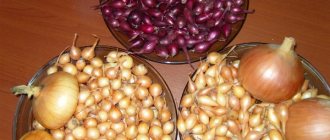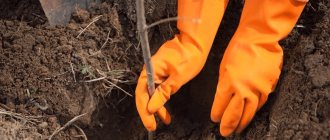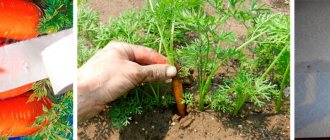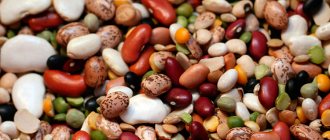The best varieties of carrots
The choice of carrots on the shelves of modern stores can confuse a novice gardener. In order not to panic and not pick up a dozen bright bags at random, you need to understand why you are growing carrots. Different varieties are suitable for different purposes.
For bunch sale and fresh consumption in summer: Bureau, Vesta F1, Victoria F1, Concerto F1, Laguna F1, Lydia F1, Mars, Napoli F1, Nellie F1, Orange Muscat, Puchkovaya, Royal Chanson, Chantenay royal, Yaroslavna.
For salads: Bolero F1, Napoli F1, Red Core, Chantenay 5.
For processing: Boltex F1, Veronica F1, Vita Longa, Dolyanka, Cardinal, Chinese Beauty, Queen of Autumn, Crown F1, Kuroda F1, Malika, Nantes Improved, Natalya F1, Princess F1, Romance F1, Samson, Forto, Holiday F1.
For winter storage: Anastasia F1, Gribovchanin F1, Canada F1, Cascade F1, Queen of Autumn, Moscow Winter, Nantes, Romance F1, Typhoon, Flakke, Flaccoro, Chantenay 2461, Elegance F1.
Universal varieties : Angara, Major F1, Red Giant.
- What kind of carrots are there - all about the varieties and their use in cooking
Classification of carrot varieties depending on their purpose.
Where to plant carrots
The beds for spring sowing of carrots should be prepared in the fall. This root crop does not have many requirements, but it is worth meeting them all, since the wrong location will lead to a decrease in the yield and taste of carrots.
Choosing a place for carrots
Carrots are one of those vegetables that should be exposed to direct sunlight all day long. Therefore, it is worth allocating the most illuminated place on the site for the ridges. In addition, it prefers loose neutral soils, and on heavy or acidic soil it becomes covered with a “beard” and becomes deformed.
Carrots cannot be planted in one place for 2 years in a row. In addition, it is not recommended to grow it after parsley, dill, celery and parsnips. But cucumbers, tomatoes, potatoes, onions, garlic or cabbage will be excellent predecessors for this crop.
Preparing a bed for carrots
Once you have decided on the planting site, you need to take care of the quality of the soil for carrots. This is done in September and consists of several stages:
- removal of weeds and plant residues from previous plantings;
- digging the ridge;
- adding organic leavening agents (peat, sand, humus);
- deoxidation of the soil, if necessary, using dolomite flour, slaked lime (fluff) or ash.
Carrots do not tolerate fresh manure, become bitter from it, have thick skin and grow mainly tops rather than root crops.
What are the advantages of growing from seedlings?
The positive aspects of pre-growing carrot seedlings are as follows:
- a high chance of getting a harvest earlier than usual by about a month;
- the vegetable is less susceptible to invasion by harmful insects;
- no thinning of seedlings required;
- the opportunity to get rid of weeds before the carrots are transplanted to a permanent place in the garden.
But this method also has some disadvantages.
There is a risk that the root crops will not grow as large as after sowing directly into open ground. It is also possible that many shoots will appear on the sides of the vegetable.
Many gardeners do not like to grow carrots from seedlings, simply because transplanting them is a very labor-intensive task.
Planting carrots
Not only the time of harvest, but also its quality depends on the correct timing of sowing carrots. There is no single planting date that will work for all varieties or regions, so you need to understand what variety you are planting and how you hope to use it.
When to sow carrots
The date for sowing carrots should always be indicated on the bag of seeds, but if you grew the seeds yourself or bought them second-hand, use the following periods as a guide.
Carrots for fresh consumption in summer (“bunched products”) are sown in early spring, as soon as the top layer of soil warms up and dries, or before winter. True, pre-winter sowing is only suitable for residents of those regions where winters are not frosty and with heavy snowfalls - otherwise the seeds will die even under a thick layer of mulch.
Return frosts will not kill carrots, but will provoke them to grow flower shoots and worsen their shelf life, so these root vegetables are no longer suitable for storage.
Carrots for storage should be sown in the second half of May, when the air warms up to a stable 15-18°C and night frosts have passed, or in the 20th of June (by the way, with such late sowing, the carrot fly does not damage the plants).
Preparing and sowing seeds
Pre-sowing preparation of carrot seeds is quite simple, but it allows you to speed up the emergence of seedlings by 5-7 days. First, discard the illiquid seeds by pouring warm water over the seeds and leaving them for 10 hours. Those that will float on the surface after the expiration date are unsuitable for sowing and can be thrown away.
High-quality seeds should be spread on wet gauze or a cotton pad and left for 2-3 days, periodically re-moistening. After this, the seeds will have small roots and they will be ready for sowing.
If you bought granulated carrot seeds, you can sow them without preparation.
The bed for carrots needs to be loosened in advance, holes cut with a rake 2-3 cm deep, at a distance of 15 cm from each other, and watered. Then you can start sowing, choosing warm, windless weather. Some gardeners try to immediately spread the seeds at a distance of 2-3 cm from each other, while others sow as needed. In the second case, the carrots will need to be thinned at least twice per season. After sowing, the holes are covered with soil or peat, watered again and, in cool weather, covered with film or spunbond until shoots emerge.
- 7 Effective Ways to Sow Carrot Seeds
There are many options for sowing carrots. Choose any of them and act.
Chemical composition of seeds
Purchased and home-grown carrot seeds have approximately the same set of useful substances. Both contain a large amount of essential oils, due to which the surface of the grains is slightly oily.
Chemical composition:
- glycerides (up to 20% of seed weight): petroselinic, petroselinic, oleic, palmitic, linoleic acids;
- beta-carotene (provitamin A), under the influence of which vitamin A is formed in the human body;
- tocopherols;
- vitamins B, D, E, ascorbic acid;
- minerals: potassium, magnesium, phosphorus, selenium, sodium, zinc, copper, iodine;
- flavonoids.
The vitamins contained in carrot seeds support healthy skin, eyes, and strengthen the skeletal system. Flavonoids normalize the functioning of the nervous system. Minerals maintain the tone of the heart and blood vessels, regulate the water-salt balance of the body.
Properties
Carrot seeds have:
- analgesic, sedative, regenerating effects;
- anti-inflammatory and tonic properties;
- diuretic effect.
During a difficult pregnancy, a decoction of carrot seeds reduces nausea in the first trimester.
Caring for carrots
The most destructive thing for carrot seedlings is the proximity of weeds and the crust that forms on the ground. Both of these can significantly spoil your harvest even before the first carrot leaves appear above the ground. To avoid this, water and loosen the bed if you see that it is overgrown with grass or has become hard. By the way, you need to loosen carrots often, because beautiful, even root crops can only be obtained in light soil.
Watering
Without watering, carrots become lethargic and bitter, and they react negatively to both constant lack of moisture and periodic droughts. However, it will not be happy about the appearance of the “swamp” either - this culture prefers stability and moderation.
To prevent your carrots from drying out right in the garden and cracking from too much moisture, make it a rule to water them once every 5-7 days to a depth corresponding to the length of the root crop. While the carrots are young and thin, it is enough to wet the soil to 5-7 cm, but adult carrots need to be watered so that 30 cm from the surface of the soil is moistened.
Feeding carrots
On normal soil, it is enough to feed carrots twice a season - the first time 3 weeks after germination, the second time a month after the first. For normal root growth, any of the following fertilizing is suitable:
- 1 tbsp. nitrophoska per 10 liters of water;
- 2 cups of wood ash per 10 liters of water;
- 20 g of potassium nitrate, 15 g of urea and 15 g of double superphosphate per 10 liters of water.
Thinning carrots
In order for carrots to grow large, the distance between the root crops must be constantly monitored, preventing the plantings from thickening. The first thinning of carrots is carried out in the phase of appearance of the first pair of true leaves, leaving 3 cm between shoots.
A row of carrots before thinning
To avoid damaging the remaining root crops during thinning, it should be done after abundant watering and loosening of the soil.
The carrots are thinned out the second time when they develop 2 pairs of full-fledged leaves. Then the distance between plants is left about 6 cm.
Diseases and pests of carrots
Most often, carrots are damaged by the carrot fly, which is attracted by the fragrant tops of this crop. Prevention of invasion is proper cultivation, unthickened plantings, and the absence of stagnant moisture in the soil. If this does not help, and the carrot leaves begin to curl, which is the first sign of a pest, you need to treat the plantings with Inta-Vir or Actellik according to the instructions.
Of the carrot diseases, the most common are various types of rot: phomosis, sclerotinia, alternaria, botrytiosis and bacteriosis. Prevention of these diseases is careful adherence to crop rotation and removal of plant debris from the ridges, but each disease has its own treatment.
- Dangerous diseases and pests of carrots
The bright sunny carrot has so many enemies! Just admire it.
How they are used in folk medicine
For medicinal purposes, carrot and wild carrot seeds are used. In July–August, umbrellas with ripened fruits are collected from cultivated plants, dried and threshed.
To prevent seed loss, the inflorescences are wrapped in cloth or gauze and then peeled in this form. Store in linen bags or glass jars, tightly closed.
In folk medicine, carrot seeds are used:
- for diseases of the liver and spleen;
- constipation and flatulence;
- high blood pressure;
- menstrual irregularities;
- gallstones and kidney stones;
- parasites.
In addition, products with carrot grains remove salts from the body, relieve spasms and inflammation.
Reference. In most folk recipes, tinctures and decoctions are prepared from carrot seeds. Sometimes the grains are consumed dry.
Contraindications for use – allergic reaction to the product, peptic ulcer, diabetes mellitus, asthma, acute inflammatory diseases of the kidneys and intestines, heart failure.
Carrot seed oil has a healing effect. It is difficult to prepare it at home, but it can be purchased at the pharmacy.
Carrot seed oil:
- heals wounds;
- increases immunity;
- normalizes the activity of the nervous system;
- has an anti-inflammatory effect.
Wild carrot seeds for treatment
Their application is wider than that of seed crops. Collected and dried wild carrot seeds are ground in a mortar or ground in a coffee grinder.
In folk medicine, wild carrot seeds are used for:
- pain relief;
- increased sexual desire;
- treatment of tuberculosis;
- increased lactation;
- removing kidney stones;
- treatment of osteochondrosis.
Children are given wild carrot seeds in the form of decoctions to get rid of worms, especially pinworms, relieve intestinal colic, and vitamin A deficiency.











